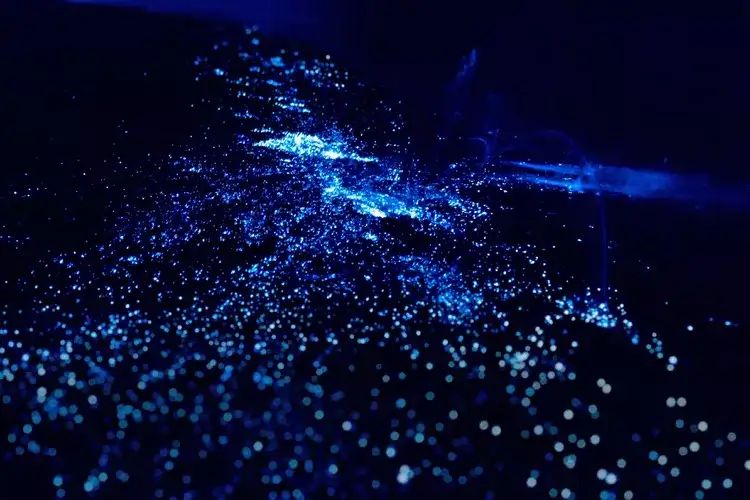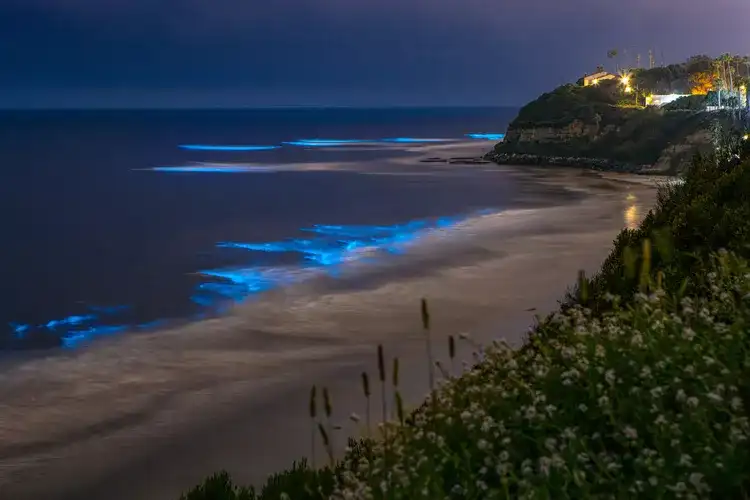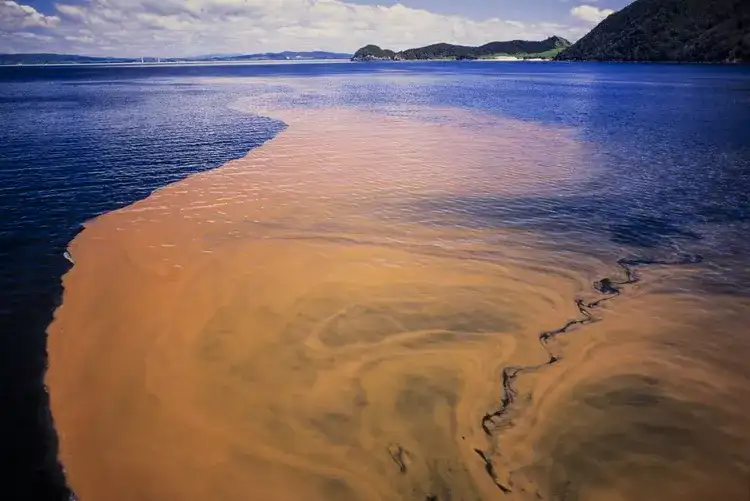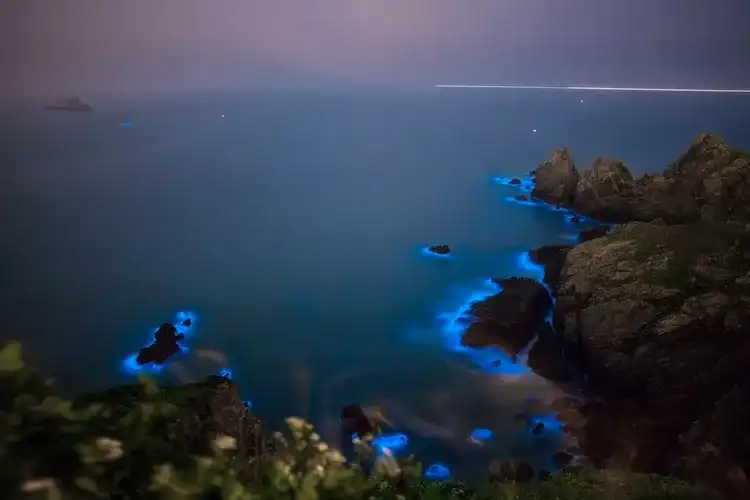What Are Bioluminescent Algae?
Bioluminescent algae are tiny, usually single-celled marine organisms capable of emitting light. The best-known of these are dinoflagellates a type of plankton responsible for many of the shimmering blue glows seen along coastlines and in moving waves at night. The glow is not just a spectacle: it’s a defensive response, triggered whenever the water is disturbed by waves, boats, or swimming animals.
While bioluminescence is common in the deep ocean (over 80% of marine life at certain depths produces light), it can also be seen on the surface. The phenomenon is most visible at night when dense populations of these algae known as blooms gather near shore, sparkling with every movement in the water.

The Science of Bioluminescence
Bioluminescence is a chemical reaction inside a living organism. In algae, it occurs when molecules called luciferins react with oxygen, sometimes with help from the enzyme luciferase. The process releases energy as light typically blue, but in some cases yellow, red, or purple.
This light serves various survival functions: in deep-sea animals, it helps with attracting food or mates, while in algae, it deters predators. The chemical structure of luciferin and the arrangement of the algae’s organelles determine the color, intensity, and duration of the light. Some famous glowing phenomena, like California’s “red tide” or Puerto Rico’s bioluminescent bays, are driven by specific dinoflagellate species.

Where and Why Does It Happen?
Bioluminescence can occur in any sea or ocean, but is most striking in places with high concentrations of the right algae. The glow is often triggered by physical movement waves, paddles, or even swimming fish. Some well-known sites include:
- San Diego, where “red tide” events turn the ocean brown by day and neon blue by night.
- Puerto Rico’s Mosquito Bay and Laguna Grande, home to glowing algae blooms (though recent changes have caused the glow to disappear at times).
- East Asia, especially Taiwan’s “blue tears” phenomenon in the Matsu Islands.
- Japan’s Toyama Bay, where the glow is caused by firefly squid, not algae.
The Risks: Toxicity and Environmental Impact
Despite their beauty, many bioluminescent algae species can form harmful algal blooms (HABs). These blooms can be toxic to marine life, pets, and humans. The best-known toxic blooms, called “red tides,” are caused by certain dinoflagellates that release potent neurotoxins. At high concentrations, these toxins can kill fish and marine mammals, contaminate shellfish, and cause illness or even death in people and animals that ingest contaminated water or seafood.
The toxins also pose a risk to swimmers. Even touching the water during an active bloom can cause skin irritation or infection. Pets, especially dogs, are at high risk if they swim or drink from affected waters. Some blooms also release chemicals like ammonia, causing further environmental harm by depleting oxygen and poisoning sea life, as seen in the expanding “blue tears” blooms in the East China Sea.
“Not all algal blooms are harmful, but those that are toxic are becoming more frequent, lasting up to five months in some places. Always avoid contact with suspicious or glowing water.”

Frequently Asked Questions About Bioluminescent Algae
- Is it safe to touch or swim in glowing water? No. Avoid contact with water containing bioluminescent algae, as toxins can cause skin reactions or more severe health problems. Never let pets swim or drink in these areas.
- How long do blooms last? Harmful algal blooms can last three to five months, depending on environmental conditions.
- Are all glowing algae dangerous? No. Only certain species produce toxins or form dense blooms that harm marine life and people. But when in doubt, stay out of the water.
Beauty and Danger in a Single Glow
Bioluminescent algae are one of nature’s great spectacles turning ordinary shorelines into glowing dreamscapes. But beneath the light show lurks a real risk: toxic blooms can harm wildlife, disrupt ecosystems, and threaten human health. Enjoy the view from a distance, and always be cautious around unfamiliar or glowing waters.





